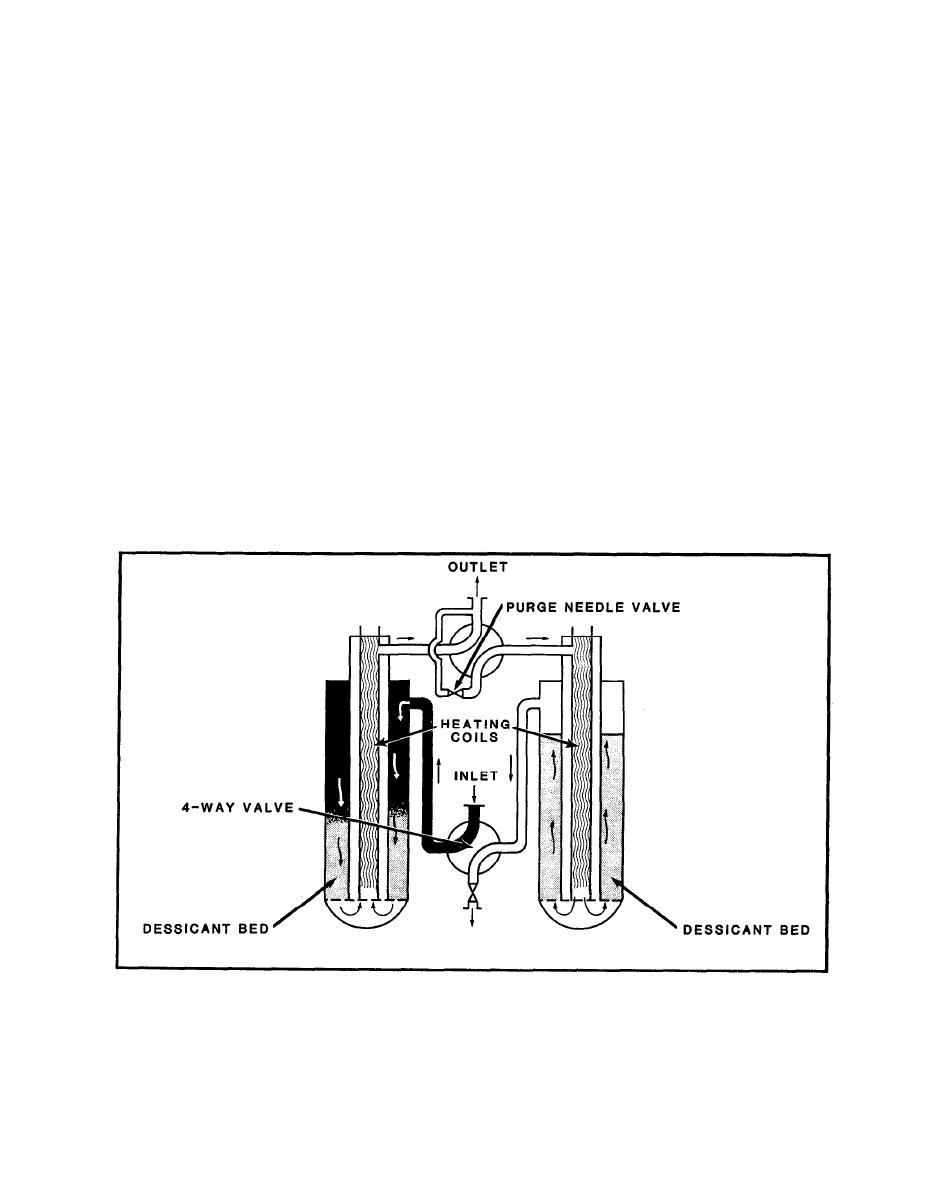

Custom Search
|
|

|
||
 Section 7. DRYERS
1 DESCRIPTION. Compressed air dryers remove moisture that might otherwise
condense in air lines, air tools, and pneumatic instruments. This condensate
can cause damage to equipment from corrosion, freezing, and water hammer, and
can cause malfunctioning of instruments and controls.
2. TYPES. Three types of air dryers are available: adsorption, deliquescent,
and refrigeration.
2.1 Adsorption Type. The adsorptive or desiccant dryer contains a bed of an
inert desiccant material, either silica gel or activated alumina, which has
high adsorptive surface area for a given weight and volume. This area is in
submicroscopic cavities that can hold water vapor removed from the air. When
the adsorptive desiccant is completely saturated with water, the water can be
driven off again by heating. An airstream passed through the desiccant will
carry away the released water vapor restoring the desiccant to its initial
adsorptive condition. Adsorption type dryers (figure 4-9) generally consist
of two drying towers,each containing an adsorbent, plumbed in parallel. The
dryer towers are cycled either manually, semiautomatically, or automatically,
so that one drying tower is on stream while the other tower is being
reactivated. Reactivation is accomplished by means of electric or steam
heaters embedded in the adsorbent or by passing dried process air through the
unit.
FIGURE 4-9. Flow Diagram of Electric Reactivated Adsorption Dryer
4-21
|
 |
|
 |
||